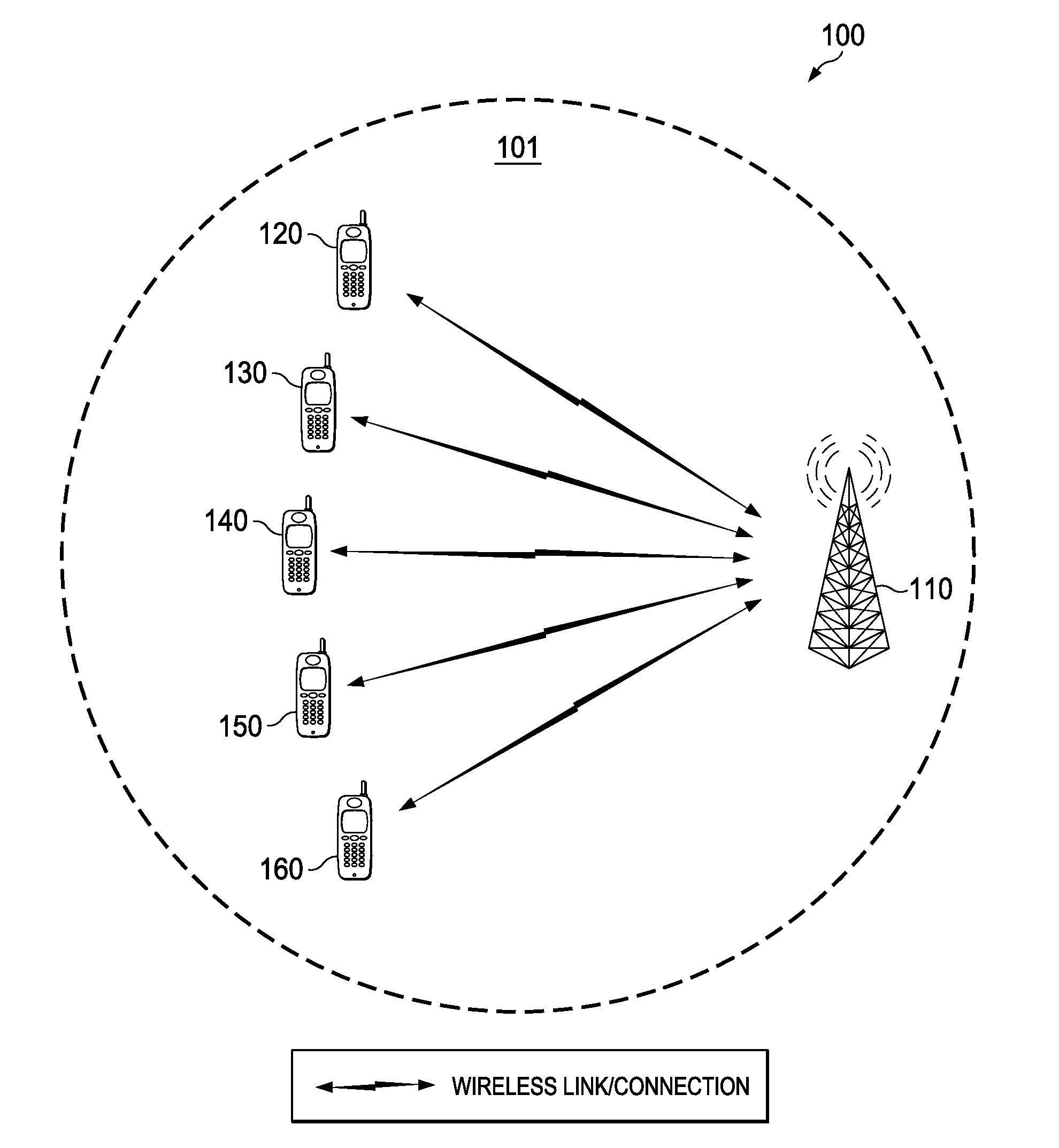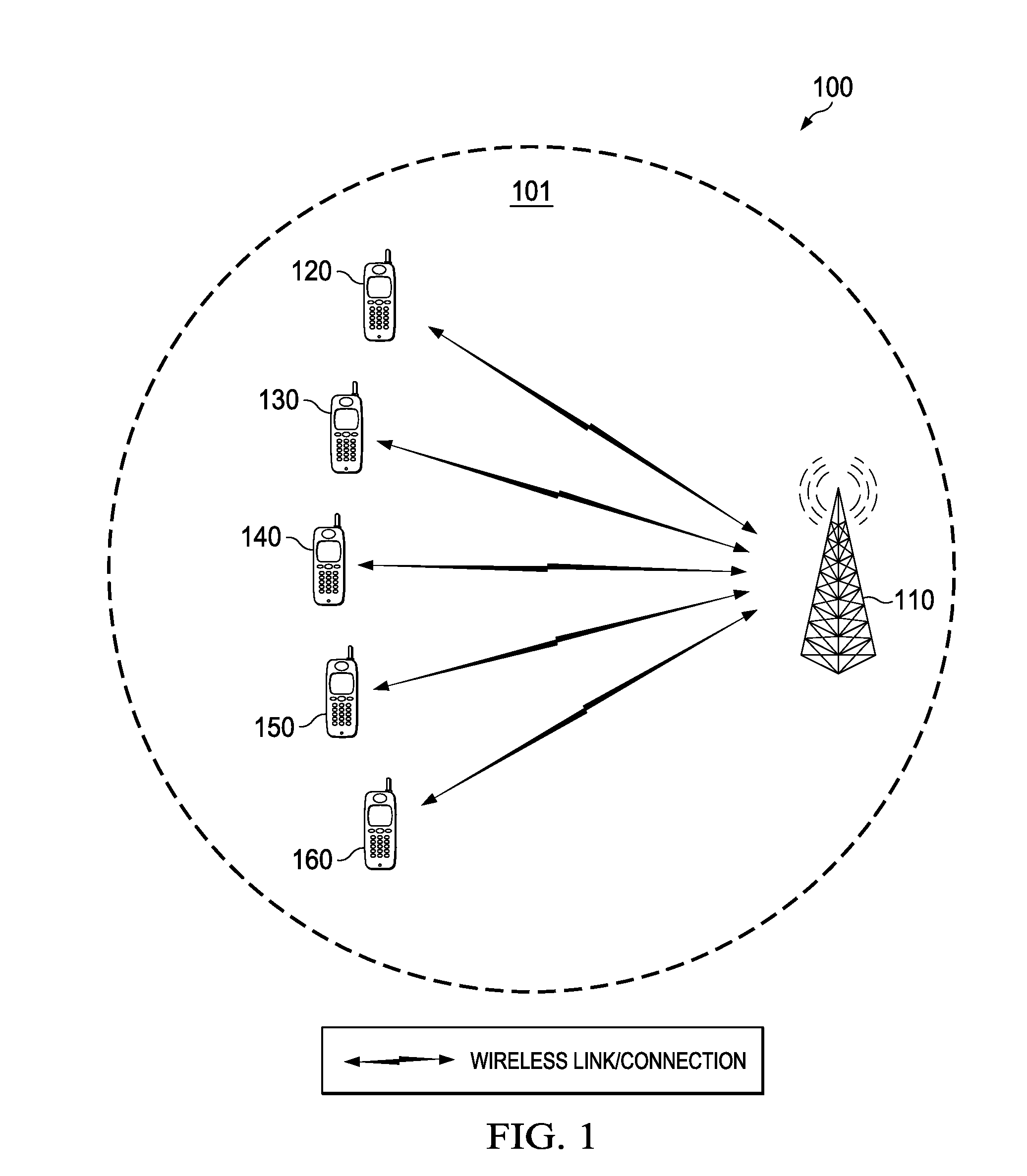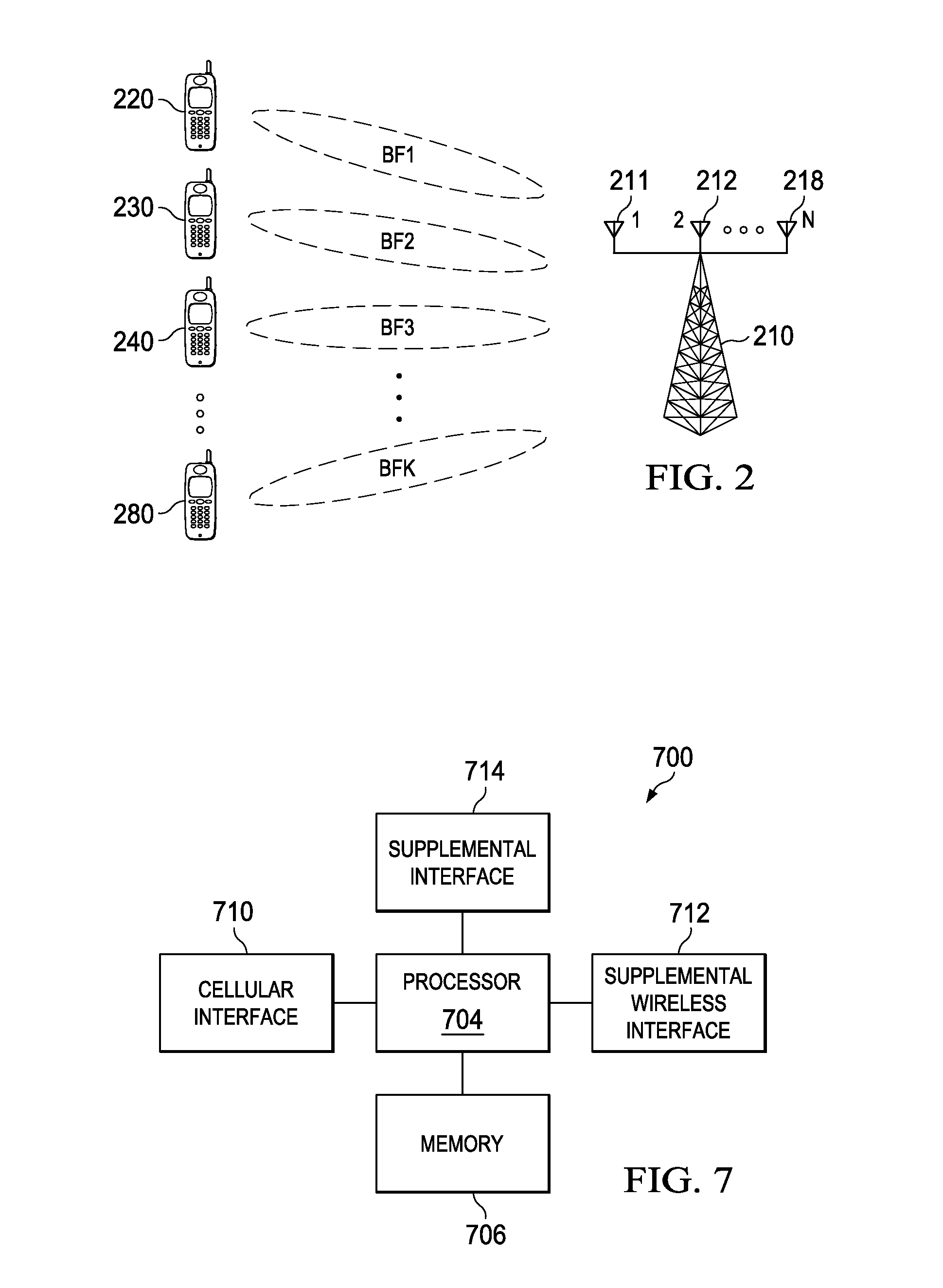Systems and methods for reducing complexity in modulation coding scheme (MCS) adaptation
a modulation coding scheme and complexity reduction technology, applied in the field of wireless communications, can solve problems such as the complexity of mcs adaptation, and achieve the effect of reducing complexity
- Summary
- Abstract
- Description
- Claims
- Application Information
AI Technical Summary
Benefits of technology
Problems solved by technology
Method used
Image
Examples
Embodiment Construction
[0017]The making and using of the presently disclosed embodiments are discussed in detail below. It should be appreciated, however, that the present invention provides many applicable concepts that can be embodied in a wide variety of specific contexts. The specific embodiments discussed are merely illustrative of specific ways to make and use the invention, and do not limit the scope of the invention.
[0018]Much of the complexity associated with MCS adaptation for MU-MIMO is attributable to processing related to QR decomposition, which is a computation performed to calculate MCSs for users in a user group. More specifically, QR decomposition is performed on a Hermitian MU-MIMO channel matrix (HH) corresponding to a new user group in order to obtain an upper-right triangular matrix (R). The upper-right triangular matrix (R) (or an inverse thereof) is used to calculate the MCSs corresponding to a MU-MIMO channel extending between the transmitter and the users in the instant user group...
PUM
 Login to View More
Login to View More Abstract
Description
Claims
Application Information
 Login to View More
Login to View More - R&D
- Intellectual Property
- Life Sciences
- Materials
- Tech Scout
- Unparalleled Data Quality
- Higher Quality Content
- 60% Fewer Hallucinations
Browse by: Latest US Patents, China's latest patents, Technical Efficacy Thesaurus, Application Domain, Technology Topic, Popular Technical Reports.
© 2025 PatSnap. All rights reserved.Legal|Privacy policy|Modern Slavery Act Transparency Statement|Sitemap|About US| Contact US: help@patsnap.com



